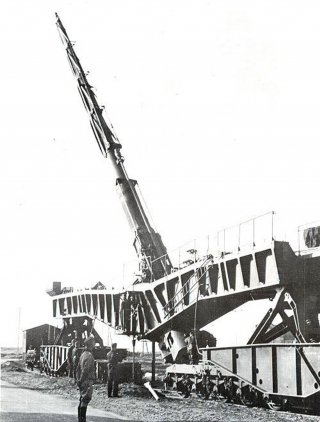Nazi Germany’s Long-Range V-3 Gun: Terror Weapon or Paper Tiger?
The Allies bombed it before it could be used on London.
The V-3 was originally a French idea. In response to the incredibly large Paris Gun of World War I infamy which bombed the city from nearly 80 miles away, the French drew up plans for their own very long-range gun. After the French surrender during World War II, a German weapon engineer named August Cönders noticed the French design and immediately took a liking to it. The design was highly unusual.
Most long-range artillery pieces of the era could fire projectiles out to nearly 100 miles. But only a handful of projectiles could be fired before they big guns needed servicing, a costly and time-intensive procedure. The enormous explosions needed to get a projectile up to speed subjected artillery barrels to very high rates of wear.
Cönders had a novel idea to solve the barrel wear problem. His design was essentially a 400+ foot long barrel that used multiple rocket boosters arranged internally along the barrel’s length to progressively speed up an explosive projectile.
Cönders conducted testing on a very small-scale 20-millimeter model. Though the initial tests were successful, Cönders had to convince higher-ups that there was some military worth to the project. He spun his prototype long-range cannon as capable of hitting London, which if possible would have been a much more cost-effective alternative to bombing raids on the city which were pricey in terms of both manpower and material. Hitler bought it.
Technical issues aside, the gun’s location was also challenging. Because the barrel needed to be so long, the only practical way to build the gun was on enormous scaffolding, or on a hill. In order to put London in the big gun’s range, the site had also to be somewhere along the French coast near the English Channel. A favorable location was found near the coast—and just over 100 miles, or about 160 kilometers from London. Once the location was found, construction plans were quite ambitious.
Construction began in 1943. Two locations were to be built under a hilltop less than a mile apart, and each location would have a group of 25 barrels. The two locations were to be connected by an underground rail system almost 350 feet below ground that would have protected ammunition dumps from British bombers. The top of the hill was to be protected by a gigantic concrete cap nearly 20 feet thick, and the tunnel entrances were also to be protected by armored steel doors.
The only time the guns were fired in anger was against Luxembourg, though accuracy and performance were not ideal. The site was bombed using 12,000-pound bunker-buster bombs in 1944. Luckily for Londoners, the V-3 was never able to fire on their city. Though the project’s projectiles were relatively small, they would certainly have caused extensive damage.
Caleb Larson holds a Master of Public Policy degree from the Willy Brandt School of Public Policy. He lives in Berlin and writes on U.S. and Russian foreign and defense policy, German politics, and culture.
Image: Wikimedia

